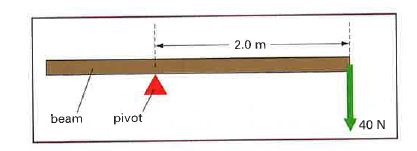What is the moment of force in physics? (class 10)
Last updated on May 27th, 2023 at 04:38 pm
Today’s topic is about the Moment of Force – we will discuss it in detail. When a force is applied on a suitable point of a pivoted body and a turning effect of the body is witnessed then we can say that a moment of force is produced.
In other words, the turning effect of a pivoted body under the influence of a force on it is called the Moment of force. The turning effect is equivalent to the moment of force here.
When a body is fixed at one point (called a pivot point) being attached to another static system is called a pivoted body. When a force is applied at a suitable point of this kind of pivoted body then it starts to have a turning effect. And this motion is called Rotational motion. The axis of rotation passes through the pivot point.
How will you measure a moment of force?
The moment of force is equal to the product of the magnitude of the force and the perpendicular distance of the line of action of the force from the axis of rotation (pivot point). So from this product, the moment of force can be measured or calculated.
The moment of force is also known as Torque.
What are the factors that affect the moment of force?
The turning effect or moment of force of a body depends on
1> The magnitude of the force applied
2> The perpendicular distance of the line of action of the force from the axis of rotation(or the pivot point)
What is the value of the moment of force when the force is applied to the pivot point of a pivoted body?
In this case, the value of the moment of force is zero.
Explanation: Moment of force = Magnitude of force x perpendicular distance of the line of action of the force from the pivot point
As in this case, the 2nd parameter is zero, so the moment of force is also zero.
Unit of the moment of force in SI
Its SI unit is Newton meter (Nm)
Sample numerical problem on the moment of force
1 ] Calculate the Moment of force from the given setup shown in the diagram below.

Solution: Moment of force = 40 N x 2 m= 80 Nm
Reference/Further study:
